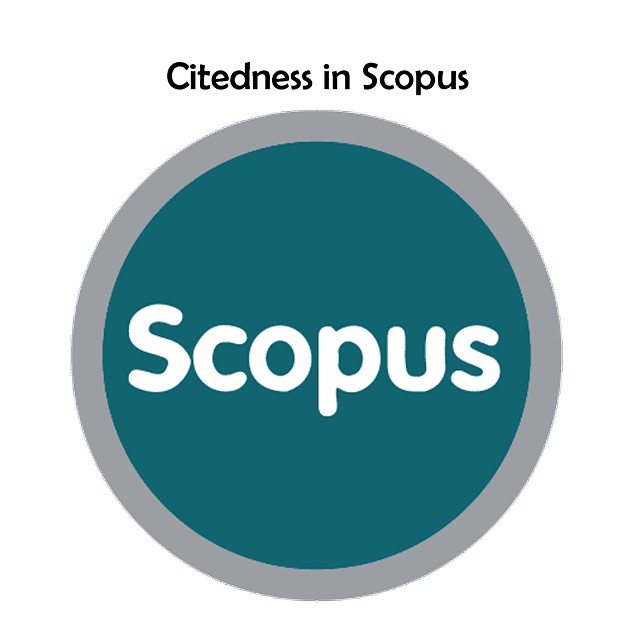Feature Extraction Using Mel-Frequency Cepstral Coefficients (MfCC) Technique For A Tajweed Guess Based on Android Application Development
DOI:
https://doi.org/10.15408/jti.v18i1.44721Keywords:
ndroid, Learning Apps, Artificial Intelligence, Hidden Markov Model, Speech recognition.Abstract
The development of information and communication technology today has had a significant impact on various aspects of life, including education. One notable example is the increasing number of applications designed for learning to recite the Quran with proper tartil. The growing trend of tahfidz (Quran memorization) is undoubtedly a positive development from a religious perspective. However, many individuals focus solely on memorization without acquiring the ability to recite the Quran properly and accurately. One discipline that supports proper Quran recitation is the knowledge of tajweed. Numerous applications have been developed in this field, especially on Android platforms. However, applications that utilize artificial intelligence (AI) to recognize tajweed rules and involve users in guessing tajweed readings are still in need of further development. The aim of this research is to develop a tajweed learning application using the concept of Automatic Speech Recognition (ASR). This study employs data collection methods such as literature review, quantitative methods, and testing. The design is represented using Unified Modeling Language (UML), while the application is tested using the Black Box Testing method. For data analysis and testing of the speech recognition model, the Hidden Markov Model (HMM) algorithm is employed, with Mel-Frequency Cepstral Coefficients (MFCC) used for feature extraction. The output of this research is an Android-based tajweed learning application that integrates speech recognition and allows users to guess tajweed rules interactively.
References
A. Abdulkareem, T. E. Somefun, O. K. Chinedum, and F. Agbetuyi, “Design and implementation of speech recognition system integrated with internet of things,” International Journal of Electrical and Computer Engineering, vol. 11, no. 2, pp. 1796–1803, Apr. 2021, doi: 10.11591/ijece.v11i2.pp1796-1803.
U. I. Ibrahim, H. Ohize, U. A. Umar, and Y. Aliyu, “Design and Construction of Voice Controlled Home Automation using Arduino,” ABUAD Journal of Engineering Research and Development (AJERD), vol. 7, no. 1, pp. 144–152, Apr. 2024, doi: 10.53982/ajerd.2024.0701.14-j.
M. J. Aqel and N. M. Zaitoun, “Tajweed: An Expert System for Holy Qur’an Recitation Proficiency,” in Procedia Computer Science, Elsevier, 2015, pp. 807–812. doi: 10.1016/j.procs.2015.09.029.
“H" SAYUTI JWID.” [Online]. Available: www.tedisobandi.blogspot.com
A. Sujjada, G. P. Insany, and M. F. Nugraha, “Implementasi Automatic Speech Recognition Pada Penilaian Hafalan Al-Quran Dengan Metode Murojaâ€TMah Berbasis Android,” CICES, vol. 10, no. 2, pp. 216–228, Aug. 2024, doi: 10.33050/cices.v10i2.3247.
Q. Nada, C. Ridhuandi, P. Santoso, and D. Apriyanto, “Speech Recognition dengan Hidden Markov Model untuk Pengenalan dan Pelafalan Huruf Hijaiyah,” 2019.
A. Al Harere and K. Al Jallad, “Quran Recitation Recognition using End-to-End Deep Learning.”
D. S. Rahmantara, K. D. K. Wardhani, and M. R. A. Saf, “Aplikasi Pengenalan Nama Surah pada Juz ke 30 Kitab Suci Al-Qur’an Menggunakan Speech Recognition,” Jurnal RESTI (Rekayasa Sistem dan Teknologi Informasi), vol. 2, no. 1, pp. 345–353, 2018, doi: 10.29207/resti.v2i1.285.
A. Sudiarjo, A. R. Mariana, and W. Nurhidayat, “Aplikasi Pembelajaran Ilmu Tajwid , Waqaf dan Makharijul Huruf Berbasis Android,” Jurnal Sisfotek Global, vol. 5, no. 2, pp. 54–60, 2015, [Online]. Available: http://journal.stmikglobal.ac.id/index.php/sisfotek/article/view/80
N. Anggraini, A. Kurniawan, L. K. Wardhani, and N. Hakiem, “Speech recognition application for the speech impaired using the android-based google cloud speech API,” Telkomnika (Telecommunication Computing Electronics and Control), vol. 16, no. 6, pp. 2733–2739, Dec. 2018, doi: 10.12928/TELKOMNIKA.v16i6.9638.
A. Akbar, A. Y. Husodo, and A. Zubaidi, “The Implementation of the Google Speech on Qur’an Recitation Correction Application Based on Android).” [Online]. Available: http://jtika.if.unram.ac.id/index.php/JTIKA/
N. K. Ekanayake and N. K. Ekanayake, “Android Operating System,” 2018. [Online]. Available: https://www.researchgate.net/publication/325257105
A. Abdulkareem, T. E. Somefun, O. K. Chinedum, and F. Agbetuyi, “Design and implementation of speech recognition system integrated with internet of things,” International Journal of Electrical and Computer Engineering, vol. 11, no. 2, pp. 1796–1803, Apr. 2021, doi: 10.11591/ijece.v11i2.pp1796-1803.
X. Li, T. Henning, and C. Camerer, “Estimating Hidden Markov Models (HMMs) of the cognitive process in strategic thinking using eye-tracking,” Frontiers in Behavioral Economics, vol. 2, Oct. 2023, doi: 10.3389/frbhe.2023.1225856.
“Automatoc Speech Recognition: Systematic Literature Review,” IEEE Access, 2021.
“Mel Frequency Cepstral Coefficient and Its Application: A Review,” IEEE Access, 2022.







